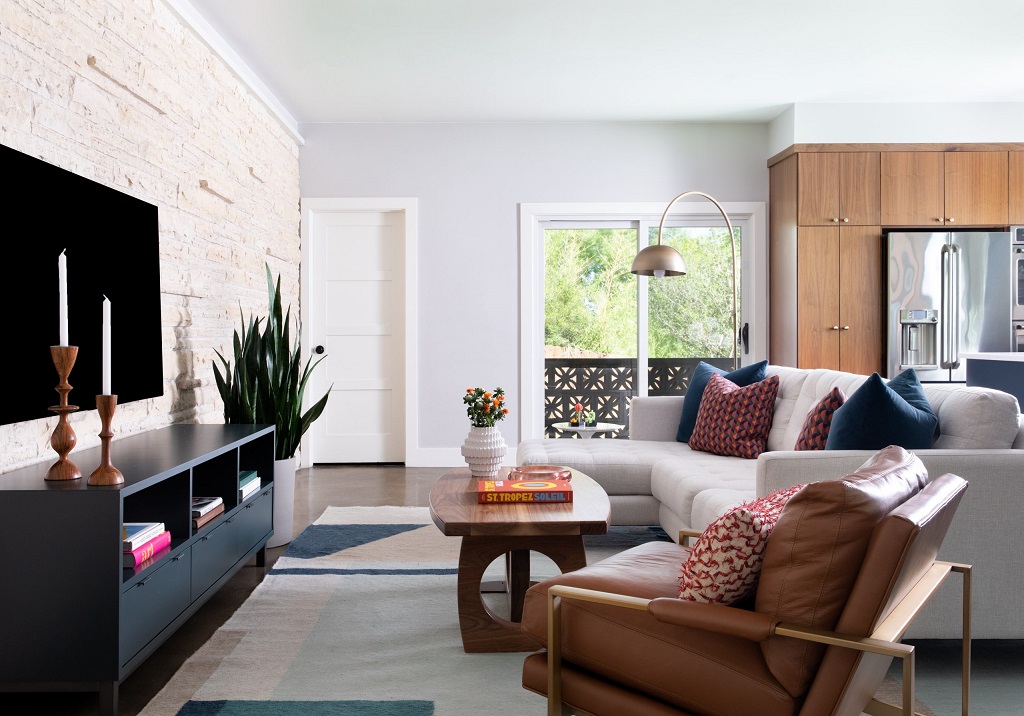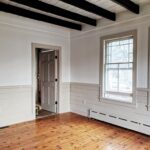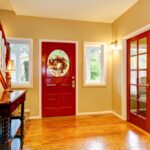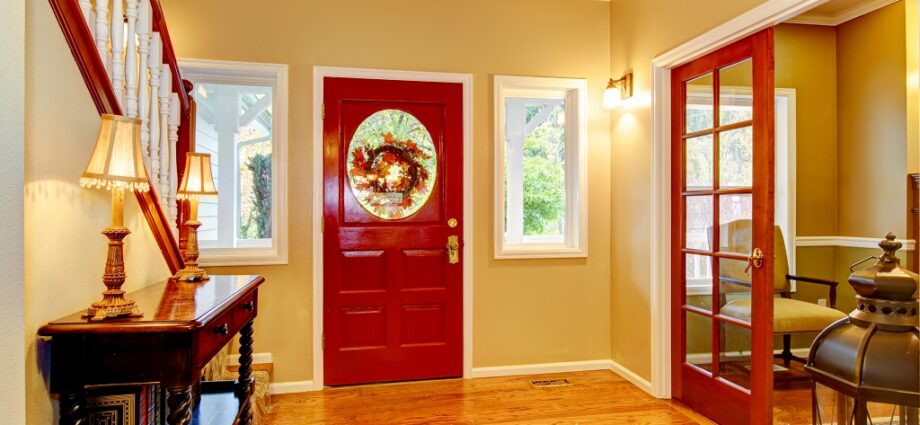Your entryway is the first impression your home makes. It’s a transitional space that welcomes guests and sets the tone for the rest of your home’s décor. Choosing the right paint color for your entryway plays a crucial role in creating a warm, inviting, and stylish atmosphere. But with countless paint colors to choose from, the decision can feel overwhelming. Fear not! This guide will help you navigate the world of paint colors and select the perfect hue for your entryway’s Hall of Fame.
Understanding the Psychology of Color
Colors evoke emotions and influence how people perceive a space. Here’s how some popular color choices can impact the feel of your entryway:
- Warmer Colors: Warm colors like yellow, orange, and red create a sense of warmth, energy, and hospitality. They are ideal for small entryways, making the space feel more inviting and expansive.
- Cooler Colors: Cooler colors like blue, green, and gray promote feelings of calmness, serenity, and sophistication. They can be great for larger entryways or those with abundant natural light.
- Neutrals: Neutral colors like white, beige, and cream offer a timeless and versatile backdrop. They allow decorative elements and furniture to take center stage and can be easily paired with various accent colors.
Consider Your Home’s Style
The paint color for your entryway should complement the overall style of your home:
- Modern Homes: Bold colors like black, navy blue, or charcoal can create a dramatic and sophisticated statement in a modern entryway. Pair them with metallic accents and minimalist furniture for a cohesive look.
- Traditional Homes: Warm neutrals like beige, cream, or light taupe create a timeless and elegant feel in a traditional entryway. Consider incorporating classic furniture pieces and decorative accents for a refined touch.
- Mid-Century Modern: Earthy tones like burnt orange, olive green, or mustard yellow can evoke a mid-century modern aesthetic. Pair them with vintage furniture and geometric patterns for a touch of retro flair.
Lighting and Flow: Making Wise Choices
Lighting and the flow of your entryway can influence your paint color selection:
- Limited Natural Light: If your entryway receives minimal natural light, opt for lighter colors like white, beige, or light gray to brighten the space and avoid a cave-like feel.
- Abundant Natural Light: If your entryway is bathed in natural light, you have more freedom to explore bolder colors. Consider deeper shades of blue, green, or even a warm and inviting red.
- Open Floor Plan: If your entryway opens into another living space, consider using a color that complements the adjoining room’s color scheme to create a sense of flow and continuity throughout your home.
Creating a Focal Point: Embrace Accent Walls
A well-placed accent wall can add visual interest and personality to your entryway. Consider these tips:
- Bold Choice: For an entryway with ample space, choose a bold or dramatic color for an accent wall. This can be a great way to showcase artwork, a statement mirror, or a console table.
- Complementary Colors: Select an accent color that complements your main entryway paint color. For instance, consider a soft blue or green accent wall if your main color is warm cream.
- Pattern Play: For a bolder statement, consider using patterned wallpaper on your accent wall. This can add personality and visual interest to a smaller entryway.

Beyond Color: The Power of Finishing Touches
While paint color is crucial, consider these elements to complete your entryway’s look:
- Flooring: The color and material of your flooring should complement your paint color. Light-colored flooring pairs well with bolder paint choices, while darker flooring can balance lighter paint colors.
- Doors: The color of your front door can significantly impact your entryway’s overall aesthetic. A bold color can create a dramatic statement, while a neutral color can create a more classic feel.
- Décor and Furniture: Decorative elements like artwork, mirrors, and furniture contribute significantly to the entryway’s style. Choose pieces that complement your paint color and overall aesthetic.
Embrace the Journey: Experimentation and Inspiration
Choosing the perfect paint color can be a fun and creative process. Here are some tips to guide you:
- Sample, Sample, Sample! Never underestimate the power of paint samples. Apply samples to your entryway walls in different lighting conditions to see how the color looks throughout the day.
- Seek Inspiration: Browse online resources, and home décor magazines, and visit paint stores to gather inspiration. Consider color palettes and combinations that resonate with your style.
- Start Small: If you’re feeling overwhelmed, consider painting a small area first, like the back of the entryway closet door or a small accent wall. This allows you to experiment with color and see how it looks in your space before committing to a larger area.
- Get Help: Don’t hesitate to seek help from a professional interior designer or color consultant. They can provide valuable guidance based on your space, style preferences, and lighting conditions.
Related: How Can I Infuse My Personality Into My Home’s Aesthetic?
The Takeaway: A Welcoming Entryway Awaits
With the right paint color and a touch of creativity, your entryway can transform from an afterthought into a welcoming and stylish space. Remember, there’s no single “perfect” color – the key is to choose one that complements your home’s style, reflects your personality, and creates a positive first impression. So, grab your paintbrush, embrace the journey of exploration, and create your entryway’s very own Hall of Fame!
Happy Decorating!










